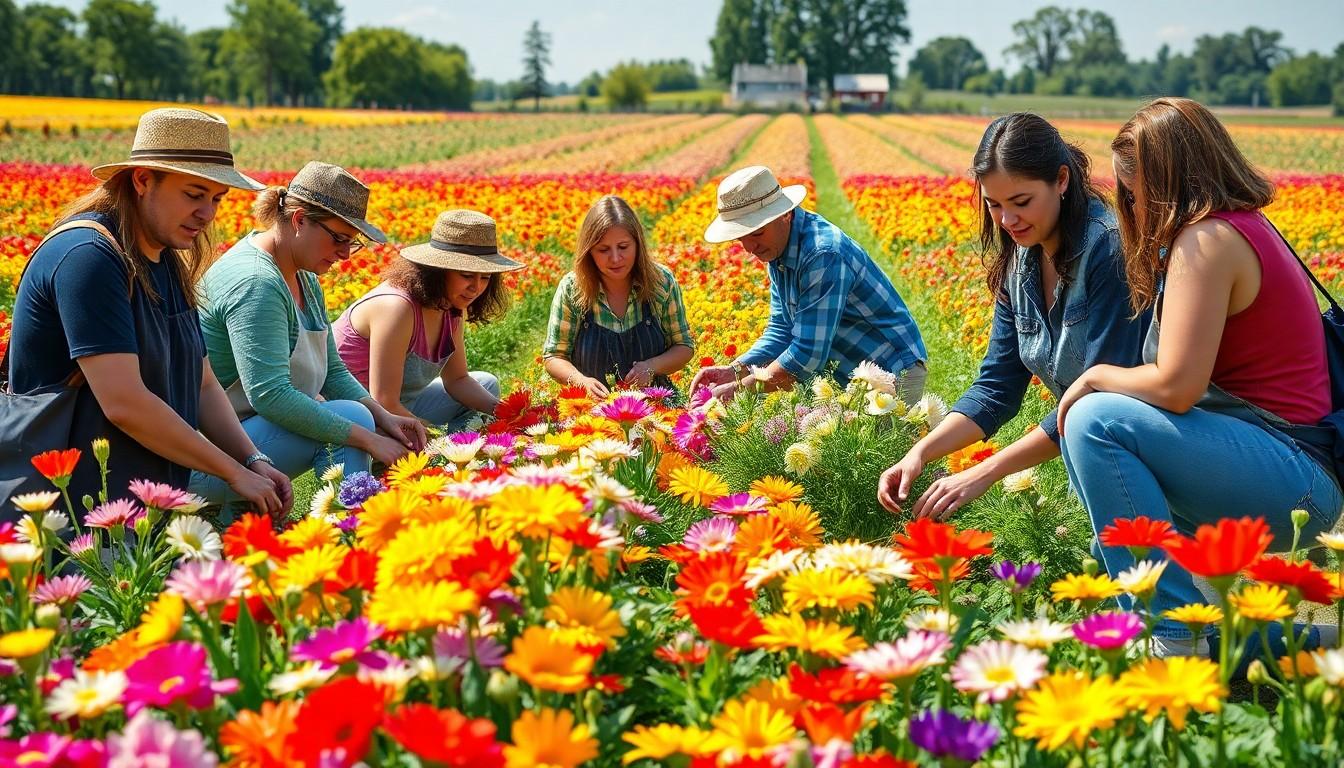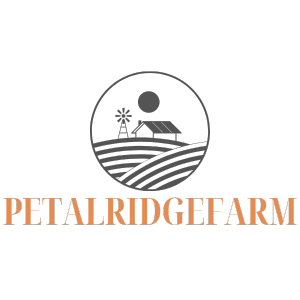Flower farming isn’t just about planting seeds and hoping for the best. It’s a colorful adventure filled with dirt, blooms, and the occasional bee buzz that can turn into a symphony of chaos. For anyone looking to dive into this vibrant world, flower farming books are the golden tickets. They’re packed with wisdom, humor, and maybe a few dirt-covered secrets that’ll make even the most seasoned gardener chuckle.
Flower Farming Books
Flower farming books serve as essential guides for aspiring and seasoned floriculturists. They cover a range of topics, including soil health, pest management, and seasonal planting techniques. Readers find practical advice on selecting the right flower varieties based on region and climate.
Books like “The Flower Farmer” provide insights into small-scale operations, enabling growers to cultivate profitable flower gardens. Effective strategies for marketing, sales, and customer engagement often feature in these resources. Techniques for design and arranging flowers also receive attention, helping readers enhance the visual appeal of their offerings.
Popular titles frequently emphasize organic practices. These practices attract environmentally conscious consumers, leading to increased sales opportunities. Some books focus specifically on native species, promoting biodiversity and sustainable growing methods.
Illustrations and photographs enhance comprehension and inspire creativity. Readers often appreciate detailed case studies, showcasing real experiences from established flower farmers. Enthusiasts can also explore seasonal growing calendars to optimize their planting schedules.
Experts contribute to many of these texts, sharing their firsthand experiences and best practices. Recommendations for tools and supplies prove invaluable for maximizing efficiency in flower production. Overall, flower farming books present an amalgamation of practical knowledge and artistic inspiration, supporting growers in multiple aspects of their journey.
Top Flower Farming Books to Consider

Flower farming offers a wide array of resources for every level of expertise. These books provide essential insights, practical guidance, and inspiration for growers.
Beginner-Friendly Options
“Cut Flower Garden” by Erin Benzakein serves as an excellent starting point. This comprehensive guide focuses on growing cut flowers, with clear steps and layouts for easy understanding. “Floret Farm’s Cut Flower Challenge” also deserves attention, offering a structured approach for novice gardeners over four seasons. In addition, “Flower Farming in the Midwest” highlights regional considerations and tailored advice for those in the area. Each book features vivid photographs and user-friendly formats, helping beginners gain confidence in their gardening skills.
Advanced Farming Techniques
For those ready to dive deeper, “The Flower Farmer” by Lynn Byczynski provides valuable insights into scaling operations and sustainable practices. Another noteworthy title, “The Organic Flower Grower” by Georgina Reid, emphasizes advanced organic techniques and pest management strategies. “Floral Workshops” introduces innovative designs and marketing approaches, showcasing success stories from experienced florists. Each book includes expert case studies and real-life applications, guiding seasoned growers toward improved efficiency and higher yields. Readers benefit from practical tools and insights that elevate their flower farming business.
Key Themes in Flower Farming Literature
Flower farming literature explores numerous vital themes essential to successful cultivation and business practices. Focus on sustainability and pest management emerges as prominent topics in many titles.
Sustainable Practices
Sustainable practices form a cornerstone in flower farming books. Authors stress the importance of organic methods that enhance soil health and biodiversity. These practices aim to reduce chemical usage, promoting healthier ecosystems. Additionally, many titles present strategies for composting and crop rotation that nurture the land. Resourceful growers learn how to select native flower species that thrive in local climates, minimizing resource usage. Books often feature case studies showcasing successful sustainable farms that inspire readers. Moreover, practical advice on using biodegradable materials for packaging and marketing aligns with eco-friendly aspirations in the industry.
Pest and Disease Management
Pest and disease management receive significant attention in flower farming literature. Effective strategies guide readers through identifying common pests and diseases affecting flowers. Many authors share integrated pest management techniques that blend biological control with cultural practices. Knowledge on maintaining healthy plants plays a crucial role in preventing outbreaks. Readers discover how proper watering and nutrition contribute to resilience against diseases. Specific titles provide insight into monitoring methods and when to take action, ensuring sustained plant health. By sharing real-life challenges, these books equip growers with essential tools needed to address pest and disease concerns effectively.
Essential Resources and Tools
Flower farming requires specific resources and tools for success. Books like “The Flower Farmer” provide comprehensive information on crucial equipment and supplies. Essential tools include soil testers, pruners, and planting trays, which facilitate efficient gardening practices. Access to irrigation systems also plays a vital role in maintaining plant health, especially in dry regions.
Another important resource involves seed suppliers specializing in native and organic varieties. Local garden centers may offer a selection tailored to regional climates. Engaging with online communities allows growers to share experiences and recommendations for reliable sources. Fellow farmers often suggest the importance of maintaining records to monitor plant growth and pest occurrences.
In addition, hands-on workshops provide practical knowledge through demonstrations. These events offer opportunities to learn about flower arrangement techniques and advanced cultivation methods. Attending farmer’s markets and flower festivals exposes growers to current trends and customer preferences. Podcasts focusing on flower farming topics deliver valuable insights and tips from experts in the field.
Consulting online platforms helps streamline learning and provide access to a wealth of information. Many websites offer resources such as guides, webinars, and forums specifically for flower farming. Using social media can also connect growers with valuable insights and support networks. Local agricultural extension offices often serve as excellent resources for advice and assistance in sustainable practices.
Prioritize practical experiences and expert recommendations in the journey of flower farming. Understanding essential resources and tools leads to more fruitful outcomes and contributes to the overall success of flower growers.
Turning Passion into Profession
Flower farming books serve as indispensable companions for anyone looking to thrive in this vibrant field. They offer a wealth of knowledge that blends practical advice with creative inspiration. Whether one is a beginner or a seasoned expert these resources provide insights that cater to various skill levels and regional needs.
By embracing the principles of sustainability and effective pest management outlined in these books growers can cultivate not just beautiful blooms but also a healthy ecosystem. The combination of expert case studies and hands-on tools enables flower farmers to refine their techniques and maximize their success.
Ultimately flower farming books empower individuals to turn their passion into a rewarding venture while fostering a deeper connection with nature. Through these valuable guides aspiring floriculturists can navigate the challenges and joys of flower farming with confidence.

